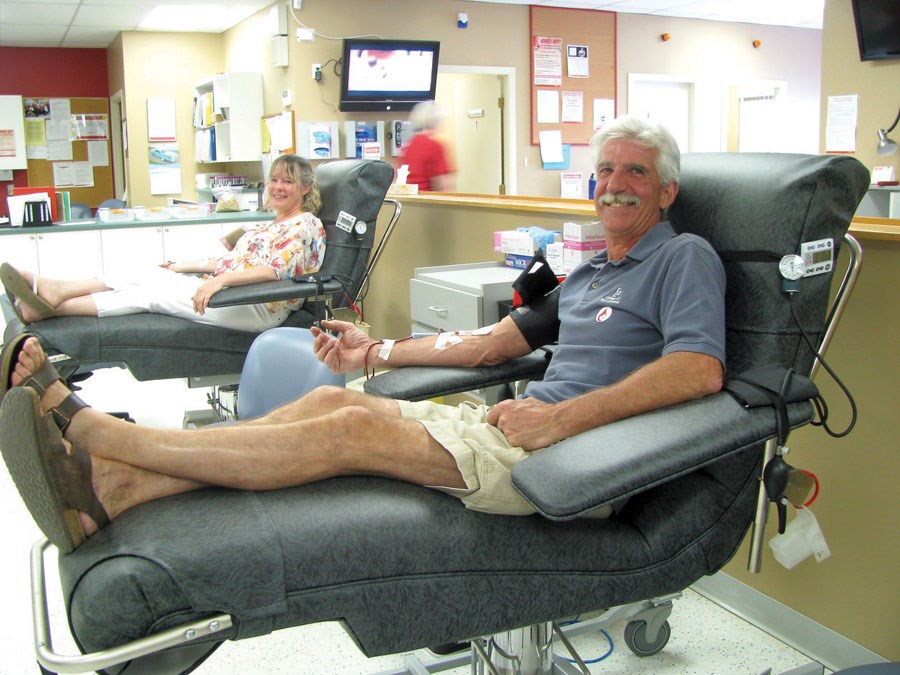For 17 years, Holly Broderick has advocated for blood donation in Prince George’s local clinic, but in one month she will close that chapter of her life.
Broderick, the supervisor of the Prince George clinic, is one of 17 staff who will lose their jobs when the clinic has its last day on May 27.
“It’s devastating,” said Broderick, after learning the news Thursday morning. “I still believe that there is a need and there’s a lot of donors in Prince George and the surrounding areas that want to contribute and have been there for Canadian Blood Services.”
Her coworker Yvonne Myatovic, who has worked as casual staff for a year, said she’s upset for her colleagues and worried how loyal local donors will take the move.
“We were blind-sided this morning,” she said.
Canadian Blood Services said the decision was part of a national plan to cut costs and address a dropping demand for blood in western countries over the last few years.
“We’re really seeing the benefits of stronger work on the medical side where (doctors) are transfusing less, they’re finding better medical process that just don’t involve as much blood,” spokesman David Patterson said.
It was “a very expensive proposition” to fly Prince George blood to Vancouver for processing, said Patterson who stressed the move would have no impact on supply of blood to local hospitals.
It cost about $1,000 each clinic day to fly the blood south, whereas the blood from other sites is driven to Vancouver in a vehicle that can combine several clinic collections.
The announcement coincided with the closure of two other permanent clinics in the Maritimes and 16 mobile clinics across the country, for an estimated savings of $2.9 million, Patterson said. Prince George’s annual operating budget is about $1-million.
Prince George was the only clinic north of Kelowna, and according to a 2014 Vancouver Sun article, the two communities topped B.C. in donations. Kamloops still has a mobile clinic, and Patterson said there were no current plans to offer one in Prince George.
The city has almost 3,000 active donors, Patterson said, and encouraged support of the organization in other ways, like joining the stem cell registry.
Patterson said there’s always a need for blood, as a perishable product, but that the need can be filled by the remaining 36 permanent and 909 mobile spots across the country.
“There is demand and we believe that by continuing to improve our recruitment effectiveness that we can satisfy that demand within the clinics that we have now in our 2015-16 plan,” said Patterson.
“Based on our math we’re looking at needing approximately half a million new donors over the next three years to continue to maintain Canada’s blood supply.”
While Broderick understands the non-profit needs to consider its finances, she disagreed with the decision.
“I know that logistically we do live in the north and we have to fly our blood out and there’s a cost to that, but does that outweigh saving lives?” she said.
“It’s a huge part of my life. I dedicated a lot of my time and I still believe that it’s something that hopefully everyone should do.
Patterson called the closure a recent decision, in response to frustration from staff that the news came as a surprise.
“Clearly the hardest part of this is the impact on people,” he said.
The clinic, which ran Wednesdays, Thursdays and one Saturday a month, had 13 part-time staff, four casual staff and about 50 volunteers.
Myatovic is not happy how the announcement was handled by Canadian Blood Services.
“We heard there was going to be corporate changes but when we asked directly was the clinic going to be closed, we were told no.”
She said she knows the city won’t suffer for blood, but the organization is missing out on reliable donors.
“They regularly go every 56 days to donate because this is an industrial town and we have terrible accidents and they feel it's their way of contributing,” Myatovic said.
“I think it's one more thing that Prince George has lost as a community. it's not just about people who have lost their jobs.”
The clinic’s last day will be May 27, with a possible staff and donor event planned for May 28.



